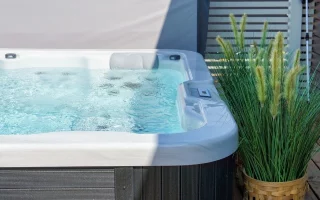Maintaining an utterly weed-free garden or lawn may not be possible, but following the proper steps can reduce the time spent weeding. It will produce a healthy turf that can better compete with the green invaders. Correctly watering is a crucial component to preventing weeds. Avoid frequent, shallow watering that promotes thatch accumulation and shallow rooting.
Weed Control
Weeds make lawns look unkempt and can impact the overall appearance of your home. A turf maintenance Kent for defense and offense in your battle against weeds is essential. Weed control is a complex task that requires good cultural practices and properly timed herbicide treatments. Many weeds produce seeds that can germinate and grow throughout the year if conditions are right. Many turfgrasses struggle to grow in compacted soil that is saturated with water. This situation invites goosegrass, annual bluegrass, and dollar weed to invade thin, weak turf areas.
Many weeds can be controlled with a preemergence herbicide applied in the fall. It is essential to follow all herbicide label directions and observe warnings and cautions, including setback distances from water bodies, roads, and property lines; spray water pH and quality concerns; volatilization; requirements for surfactants, nozzle types, and sizes; and worker protection equipment.
Fertilize
The best way to keep weeds from returning is to do something about them when they are small. Pull them before they go to seed, and make sure you dispose of them properly – don’t throw them on the compost pile. Dormant weed seeds can stay in the soil for years, and just a little rain can cause them to germinate again.
A good fertilizer for turfgrass will have a balanced blend of nitrogen, phosphorus, and potassium. Look for the term “complete” fertilizer on the product label, meaning all these nutrients are included.
Annual weeds like crabgrass are common in lawns and garden beds. They grow and set seed quickly in the rich, shallow soils near sidewalks and driveways. Perennial weeds, such as stinging nettle, also love rich, warm soils and can be challenging to control once established. Mulching unused areas with a weed-suppressing material can help to keep these weeds at bay.
Weed Prevention
Weeds rarely become a problem in well-maintained, vigorous turfgrass. Site preparation and proper turfgrass selection before establishment are critical to giving new lawns a good start. In established lawns, cultural practices that weaken the turfgrass, such as overfertilization, soil compaction, or excessive thatch, increase the opportunity for weeds to get a foothold. Weed control programs should be started with an evaluation of the lawn to determine why weeds have become a problem. Soil testing to assess nutrient levels is necessary, and any identified problems should be corrected.
If a grassy weed such as crabgrass, foxtail, or annual bluegrass is the problem, then pre-emerge herbicides (benefit, bensulide, dithiopyr, oryzalin) should be used. Other weeds, such as dandelion, clover, or wild onion, have broadleaf characteristics and require a different class of herbicides for control. In warmer cities like Austin’s the hot and relatively humid climate provides favorable conditions for the growth of a wide variety of weeds. Using fake turf can be an effective strategy in weed control; eliminating the need for traditional lawn maintenance, including mowing, watering, and fertilizing.
Mowing
The most important cultural practice for weed control is good mowing. Turf cut too short has a shallow root system, lacks density, and is vulnerable to stress-related weeds and pest infestations. Cutting too close to the ground, called scalping, exposes stolons and crowns and leads to unsightly tan to brown areas in the turf. It takes the turf to recover from such stress, and weeds often germinate and encroach during this recovery period. Regular core aeration is another effective strategy to reduce weeds by opening the soil so nutrients and water move freely. It improves the grass’s ability to outcompete weeds.
If weeds are a problem in your turf, consider using a chemical or natural pre-emergent to kill them before they sprout next season. Dormant weed seeds can remain in the soil for years or even decades, so they will likely pop up unless you treat them. Some gardeners have found that turning the soil at night dramatically reduces weed germination when the sun sets.




